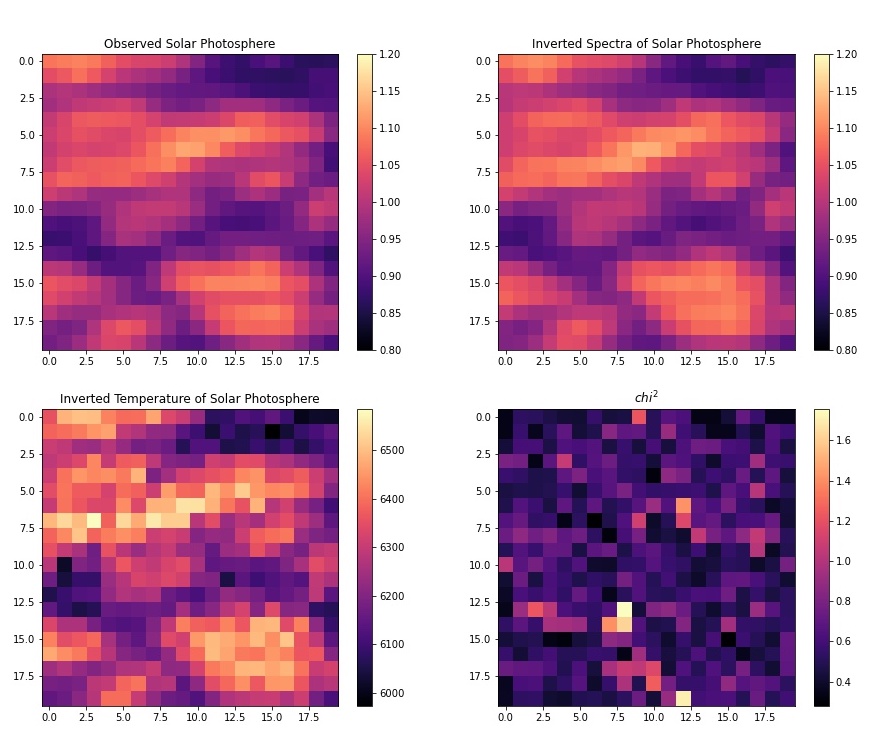Hinode Quiet Sun Inversions in Solar Cycle 24/25
The intent of this project is to study the effects of the solar magnetic cycle on the physical structure, namely the thermal structure, of the solar atmosphere in the quiet Sun. Using data from the spectropolarimeter onboard the Hinode satellite, over 130 datasets were selected from throughout Solar Cycle 24; all datasets selected were near the disk center and without any obvious magnetic signatures. Using two inversion methods, first a simple inversion based on the Milne-Eddington model, and then a more sophisticated atmospheric model using the SIR inversion code, a quarter-million pixels were inverted from each dataset. By inverting the data and analyzing the differences in the inverted parameters between the datasets, we attempt to see if the resolution and the precision of the Hinode data is able to detect meaningful differences in photospheric structure throughout the solar cycle, primarily the source function and its gradient as indicators of the temperature gradient. Inversion results using both the Milne-Eddington approach and the SIR inversion code are being analyzed for statistical differences between years
Motivation
 Physical variations in the photosphere throughout the solar cycle might be caused by subtle changes in the convective flows due to differing of magnetic fields. Previous studies have proposed the presence of other such systematic changes, for example, related to the size of the granular cells (Ballot et al., 2021). By combining the high resolution of Hinode/SP with the Spectropolarimetric Inversions Based on Response Functions (SIR) code, we are able to infer physical conditions of the lower solar photosphere.
Physical variations in the photosphere throughout the solar cycle might be caused by subtle changes in the convective flows due to differing of magnetic fields. Previous studies have proposed the presence of other such systematic changes, for example, related to the size of the granular cells (Ballot et al., 2021). By combining the high resolution of Hinode/SP with the Spectropolarimetric Inversions Based on Response Functions (SIR) code, we are able to infer physical conditions of the lower solar photosphere.
SIR Inversions
 Inversion codes infer physical photospheric conditions from observed spectropolarimetric profiles. SIR is a powerful one because it is able to infer height-stratified parameters. The inversion scheme can be chosen to probe specific photospheric properties, but the complexity of inversion configuration greatly affects the retrieved parameters. Carefully selecting different configurations in order to retrieve unbiased quantities was a key part of this project.
Inversion codes infer physical photospheric conditions from observed spectropolarimetric profiles. SIR is a powerful one because it is able to infer height-stratified parameters. The inversion scheme can be chosen to probe specific photospheric properties, but the complexity of inversion configuration greatly affects the retrieved parameters. Carefully selecting different configurations in order to retrieve unbiased quantities was a key part of this project.